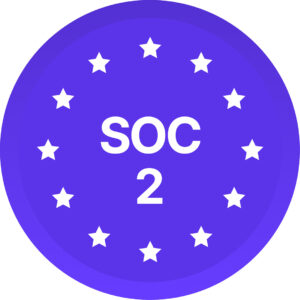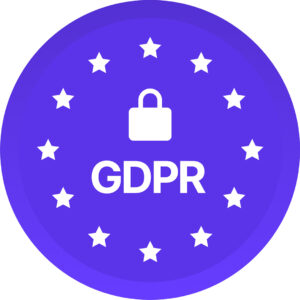In any business, the leadership team makes decisions, translates a vision into action, and inspires teams. Leaders set the tone for how an organization and its culture show up, which is why leaders have a powerful responsibility if they want to create an inclusive workplace.
An inclusive workplace, we can say, starts at the top.
When leaders work on themselves and create an inclusive leadership model, they set their organization up for success in any Diversity, Equity, and Inclusion (DEI) efforts.
What Is Inclusive Leadership?
Inclusive leadership is a style of leadership where decision-makers and organization owners are deeply committed to creating a welcoming space for all workers and strive to elevate all voices in an organization.
It’s important that this inclusive leadership model includes every level of leadership. The most important leadership role of the IO (inclusive organization) is anyone who makes decisions. From executive teams to managers, anyone who has the ability to impact workers or make changes at the company needs to be committed to change and encourage all workers to bring their best to work.
Why Is Inclusive Leadership Important?
Inclusive leadership is needed to truly implement a DEI strategy in the workplace. Diversity alone is not enough. Inclusive leadership empowers employees and allows them opportunities to advance, and this encourages them to stay, allowing a diverse work team to grow. Shirley Davis, writing for Fast Company, states that “why workers quit or plan to can be avoided/recovered by having inclusive leaders.”
Since leadership can help DEI efforts and create a diverse workforce, it can also indirectly lead to better results overall. Research backs up the idea that inclusive leadership has benefits for the whole company and its performance, and not just for DEI efforts. According to the Harvard Business Review, inclusive leaders have teams that are 29% more likely to report high levels of cooperation and 17% more likely to say they have high performance. The same source reports that improving the perception of inclusion by just 10% means an extra one day of work attendance by employees, reducing the costs associated with no-show workers.
What Does Inclusive Leadership Look Like in Practice?
The external signals of inclusive leadership vary because the practices that are put into place depend on a leader’s personality, company culture, and an organization’s needs. How inclusive leadership shows up can also vary depending on the process within an organization. Over time, you may change your approach and try new practices as your understanding and the needs of your company deepen. In general, though, inclusive leadership can look like a combination of any of these examples:
- Mentorship opportunities, especially for employees different than that of the leadership team
- Leaders speaking up against exclusion when it happens
- Leaders seeking feedback & opinions from team members they would not normally seek input from
- DEI coaching & certification for leadership as well as an ongoing commitment to learning about inclusive best practices
- Leaders actively working to eliminate bias from promotion & recruitment strategies
- Leaders standing publicly & vocally behind DEI efforts
- Leadership actively asking about what they are not aware of & asking open-ended questions to uncover ideas & issues not even on the company’s radar
- Leaders getting to know employees as individuals
- Leaders learning about different cultures & communities
There are real-life examples of inclusive leaders that can be useful. In 2018, for example, Deloitte Consulting shared research about inclusiveness it had gathered and expressed a new commitment to teaching inclusive leadership as a skill.
At Google, for instance, an annual diversity report is shared with leadership, so the company’s leaders can make decisions with inclusion in mind. Salesforce has created a Racial Equality and Justice Task Force and committed to doubling the number of Black leaders on their leadership team by 2023. These approaches highlight how inclusive leadership can look different in various organizations but still be effective.
What Are the Traits of an Inclusive Leader?
The characteristics of an inclusive leader are often centered around openness and a willingness to engage with all employees. This style of leadership depends in part on the DNA of a company and the personality of each specific leader, but in general, inclusive leader traits include:
- Emotional intelligence, including the ability to be empathetic
- Cultural intelligence, including the ability to seek out & explore the differences between cultures & the ways cultures contribute to a community
- An openness & willingness to speak with everyone about their experiences & ideas
- A willingness to move away from how things have “always been done” & an openness to considering new solutions
- An active championing of people who have not had a voice at the company before
- An ongoing commitment to learning more
- An open learning style, which includes questions like “what am I missing?” or “what do you think I should be asking to learn more or understand better?”
- A willingness to acknowledge blind spots & biases
- A commitment to take action to address bias & exclusion
- The ability to admit mistakes & to learn from them.
- Collaboration & teamwork
- The willingness to have challenging conversations
- Curiosity about other people & about new approaches
These characteristics of an inclusive leader, as we can see, are all skills that can be learned. One is not born an inclusive leader. Instead, inclusive leader traits are fostered and encouraged.
Why Can Embracing Difficult Conversations Be a Good Idea?
One of the most important qualities of an inclusive leader is the ability to have challenging conversations. This is key because you may need to have these discussions to address instances of exclusion, or you may need to have conversations about biases or missing pieces in the leadership.
If the leadership team has not been noticing or reacting to policies that make some team members feel uncomfortable, it can be distressing to explore where those policies come from. If a member of the leadership team is not interested in inclusion or diversity, resolving this issue or ending the company’s relationship with that professional can be difficult.
Ultimately, however, these kinds of hard conversations can create a culture of openness and honesty, which itself can help encourage inclusion. It can powerfully show that leadership is willing to listen and is ready to have conversations, even if they are not easy. This can generate opportunities for more discussion and more action, creating additional clarity and needed change in the organization.
How Can Diversio Help?
For leadership to create inclusion, decision-makers need metrics and a clear picture of their organization. With metrics-driven AI-powered DEI solutions, including the Diversio Dashboard, Diversio Certification for your organization and team members, Inclusion Framework™, and more. With powerful technology from Diversio, you can empower your leadership and your entire team to create measurable, authentic results. Book a demo today or contact our team to learn more.

